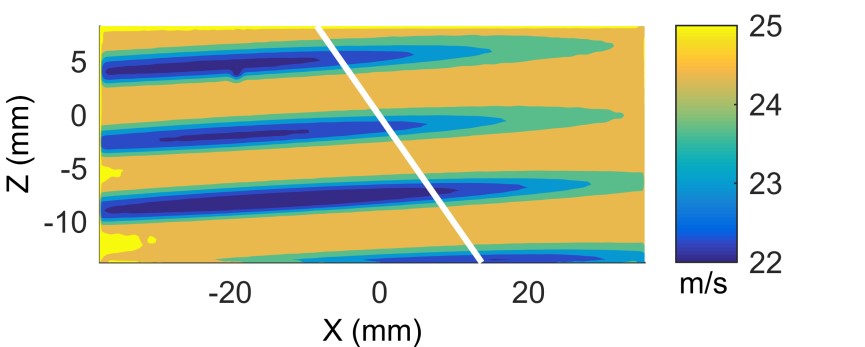Que recherchez-vous ?
Un contenu sur ce site
Une personne sur l'annuaire
Une formation sur le catalogue
Un contenu sur ce site
Une personne sur l'annuaire
Une formation sur le catalogue
This doctoral research is focused on analysing the plasma-fluid interaction in the interface between macro or micro-scale plasma and shear flows with the ultimate goal of efficient flow manipulation. This research will be carried out in Institut P’ in collaboration with the Group of Aerodynamics in the Faculty of Aerospace Engineering at TU Delft, Netherlands.
Dielectric Barrier Discharge (DBD) actuators manipulate flow by applying an ElectroHydroDynamic (EHD) force on it and have been used for different flow control applications. In DBD actuators, two conductive electrodes in an overlapping fashion are separated by a thin layer of dielectric material. When the actuator is supplied with alternating current, a discharge is generated along the dielectric surface between the two electrodes. The ions and electrons generated in this discharge are accelerated by the existing electric field which causes an “ionic wind”. These ions and electron collide with the neutral gas particles in the vicinity, thus transferring momentum. The ability to introduce perturbations into the flow spatially and temporally has made DBD actuators a useful flow control device.
Inflectional velocity profiles are a common sight in shear layers. Such velocity profiles generate inviscid instabilities which cause laminar-turbulent transition. The primary instability leads to the formation of large-scale turbulent flow structures in the shear layer. These instabilities are seen to grow along the streamwise direction and destabilize. This gives rise to a secondary instability which grows rapidly and causes transition in the shear layer. The current doctoral research envisions to control transition in shear layers by manipulating the primary and secondary instabilities using DBD plasma actuators. DBD actuators that produce spanwise-modulated plasma jets can be employed to control the primary instability. This was carried out in a MSc. thesis at TU Delft (Yadala Venkata, 2016) where a spanwise-modulated DBD actuator was employed to control the stationary crossflow instability in a swept-wing boundary layer. A novel actuator with silver electrodes was developed for this purpose and is shown in figure 1. Characterization of the actuator was carried out following which it was mounted on a swept wing model and the boundary layer was investigated using high speed PIV. The stationary crossflow modes were successfully locked (figure 2) but no transition delay was achieved owing to the amplification of the unsteady traveling crossflow waves. This doctoral research will be carried on further by designing and developing actuators at macro and micro scales and forcing over a wide range of frequencies.
Excitation and control of the secondary instability will however be challenging. These instability modes are small-scale structures that occur at very high frequencies and show rapid growth. DBD actuators that produce plasma discharges at micro-scales will be designed and developed for this purpose. Application of such micro-scale actuators to control large-scale flow structures is unfeasible. Thus, these actuators will be stacked in arrays to force the flow in the necessary scales. The characteristics of the actuators and their discharge are quite different at micro-scales when compared with macro-scales. Thus, a rigorous characterization campaign will be carried out to analyse the mechanical and electrical properties of these actuators. A novel micro-tomographic PIV will be developed to capture the temporal evolution of the micro-scale plasma discharges. This will be used to compute the force exerted by the actuator on the shear layer.
Another challenge that will be encountered during this doctoral research is the fabrication of DBD actuators. The developed actuators must be robust and have very small dimensional errors. A new and innovative fabrication technique will be designed to build actuators.
Expected outcomes of this doctoral research. The current doctoral research is expected to contribute in the following areas:
Figure 1 – The spanwise-modulated DBD actuator developed to control stationary crossflow instability in a swept-wing boundary layer.

Figure 2 – Time-averaged PIV vector field when the 9mm stationary crossflow modes are forced by the DBD actuator. The flow comes from the right.